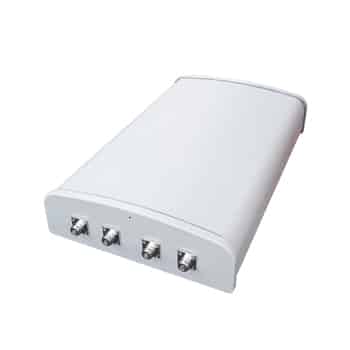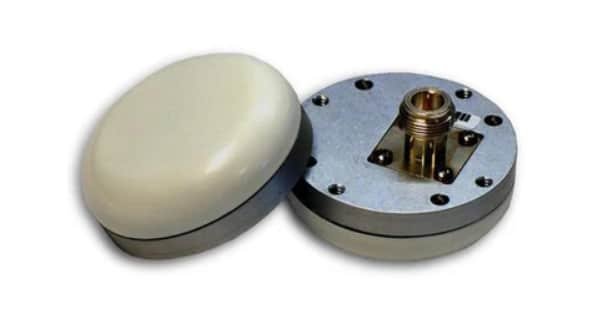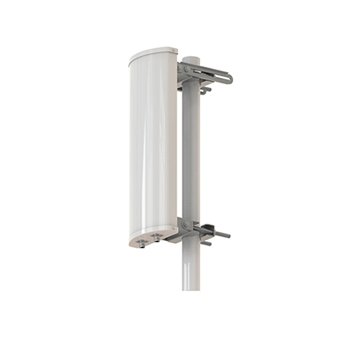Antennas are at the foremost and center of any communication system. They play the key role of transmitting and receiving signals between the source and the destinations. There are many types of antennas in different sizes and unique performance characteristics. This article aims to provide a thorough understanding of omnidirectional antennas and yagi antennas and how they compare against each other.
Table of Contents
ToggleOverview of Antennas
An antenna is a device used for converting electric power into electromagnetic waves and vice versa. They transmit and receive signals and act as the linking devices in communication systems. The antenna plays a major role in determining the performance of a communication system. Antennas are found with different physical structures, working frequency ranges, gain, directivity, polarity, etc., and are classified into different types based on them. A few of the most common types of antennas are described briefly below.
Log periodic antenna: This type of antenna is made of a series of dipoles placed along the antenna axis at different space intervals of time followed by a logarithmic function of frequency. They are directional and have narrow beamwidth. These antennas are typically used for applications where variable bandwidth is required along with antenna gain and directivity.
Wire antennas: One of the simplest and most common types of antennas that are used in a variety of settings. They use conductive wires to transmit and receive radio signals. These can be either dipole or monopole antennas. These are typically omnidirectional antennas and are used in applications such as broadcasting, wireless communication, and radio applications or mounted on vehicles, ships, buildings, etc.
Aperture antennas: This type of antenna has one or more openings on a conducting surface to admit signals. These can be either slot antennas or horn antennas. These are typically used in microwave frequencies and can be used for applications like satellites, radars, aircrafts, and spacecrafts.
Reflector antennas: This type of antenna are highly directional and uses a curved reflective surface to concentrate radio or other electromagnetic waves in one direction. These can be either parabolic antennas or corner antennas. They are used mainly as feeder antennas and are used for applications like satellite communication, radar systems, etc.
Microstrip antennas: This is a flat antenna that consists of a metal patch printed on a thin substrate. They are typically small and compact, lightweight, and easy to integrate with electronic devices. They are used in mobile devices, routers, etc.
Array antennas: This type has multiple small antennas arranged in a specific way such that each antenna works to strengthen and enhance the quality of the signal. Yagi antenna is one of the most in-demand types of array antennas. These are easily customizable and hence used for high-gain applications that need to control the radiation pattern. They are used in radio broadcasting, wireless networks, etc.
What is an Omni-directional Antenna?
Omnidirectional antennas are antennas that can transmit and receive signals in all directions equally. This makes them ideal for applications where the antenna needs to communicate with multiple devices in different directions or the signal direction of the target device varies or is unpredictable. Omnidirectional antennas are used for both portable and stationary applications. They are used in moving vehicles such as ships and RVs and also used for WiFi networks in locations such as restaurants, conference rooms, campgrounds, resorts, etc. In urban areas where there is limited space between two signal towers, omnidirectional antennas are used.
What is a Yagi Antenna?
A yagi antenna is a powerful directional antenna. It has parallel parasitic elements running on a single boom structure. A dipole acts as the driving element and the parasitic elements re-radiate the signals in a slightly different phase to that of the driving element. This provides high directional power by reinforcing the signal in some directions and canceling it out in others. They are typically used for point-to-point communication and long-range applications.
Key Differences Between Omni-directional Antennas and Yagi Antennas
Design and structure: Omnidirectional antennas are designed such that they have a doughnut-shaped radiation pattern with an antenna at the center. They are available in different models like monopole, dipole, ground plane, and coaxial antennas. Yagi antennas have multiple director elements arranged in parallel on either side of a beam structure in a linear array along with a driving element and reflector.
Operating principle: In an omnidirectional antenna, as radio waves pass through the antenna, the radiating elements pick them up and direct them in a complete circle, thus enabling the antenna to transmit and receive signals from all directions simultaneously perpendicular to the axis with the power varying with the axis angle declining to zero on the axis. In a Yagi antenna, the driving element generates electromagnetic waves and the reflector element placed behind the driving element reflects those waves forward such that the directors placed in the front direct and focus the reflected waves forward.
Frequency range and bandwidth: Omnidirectional and directional antennas are available in a wide range of frequencies. Omnidirectional antennas are generally available in the frequency range between 100 MHZ and 6 GHz while Yagi antennas are between 30 to 3000 MHz. Omnidirectional antennas have a broad radiation pattern and a wide beamwidth while yagi antennas have a narrow radiation pattern and a focused beamwidth.
Gain and directivity: Omnidirectional antennas produce a lower gain than Yagi antennas which are directional. Omnidirectional antennas as the name suggests direct signals in all directions in a 360-degree field while Yagi antennas are directional and hence focus signals on an angle of about 45 degrees to 90 degree field.
Installation and portability: Omnidirectional antennas are simple to install due to their 360 degree pattern. They are deployed on base stations, cellular sites, and wireless access points. They are used for both portable and stationary applications. Yagi antennas are also easy to install, but they require careful consideration of location and orientation. Yagi antennas are typically used as stationary antennas but can be customized.
Size and shipping: Both omnidirectional and Yagi antennas are available in different sizes. Omnidirectional antennas are usually composed of a rod-like structure or a simplistic structure and hence are easy to pack and ship. Yagi antennas are bulkier compared to omnidirectional antennas and can be quite long if a high gain is required. But most modern yagi antennas can be deconstructed into their elements and packed and hence can be conveniently shipped.
Advantages and Disadvantages of Yagi Antennas
Advantages:
- High gain and highly directional
- Higher coverage range than omnidirectional antennas
- Powerful than Omni antennas
- More tolerant of interferences
Disadvantages:
- The antenna is quite long for higher gains.
- Limited mobility
- Installation is more complex than omnidirectional antennas
Advantages and Disadvantages of Omni-directional antennas
Advantages:
- Versatile for stationary and mobile applications
- Easy installation
- Can be used with multiple carriers from different cell towers
- Great at boosting signals 4G/5G
Disadvantages:
- Lower coverage range
- Lower gain
- Susceptible to interference from different directions
How to Choose the Right Antenna
Performance requirements: Operating frequencies, bandwidth, antenna gain, polarization, coverage area, etc. are a few of the key performance parameters that should be considered. For applications that require a larger reception range but a relatively shorter distance and need to work with multiple network providers, omnidirectional antennas are more suitable. However, if the coverage is required for a more concentrated field or direction, a yagi antenna is more suitable. Yagi antennas are more powerful and hence suitable for long-range transmissions than omnidirectional antennas.
Physical constraints: It is important to consider the available space and mounting options. Omnidirectional antennas are compact and hence take up only a limited space. Since they have a 360-degree radiation pattern, they are easy to place and do not need readjustments even if the signal providers or cell towers change locations. Yagi antennas relatively take up more space and can be quite long if a higher gain is required. Installing yagi antennas is comparatively more complex as they require precise placement and orientation for optimal performance.
Environmental factors: Based on the placement of the antenna, environmental conditions like wind, temperature, humidity, etc. can affect the performance of the antenna. Yagi antennas with a triangular shape and extended elements on each side can be more affected by conditions like strong winds. Omnidirectional antennas with their simpler structure are more resistant to harsh environmental conditions.
Cost analysis: Cost is a major factor to consider when selecting antennas. Initial purchase and installation cost, operation cost, and the return on investment are the main factors to be considered. Both yagi antennas and omnidirectional antennas are readily available in the market and hence can be obtained for affordable prices.
Conclusion
Antennas play a key role in communication systems and their performance will have a major effect on the overall performance of the communication system. Omnidirectional and yagi antennas are commonly used for both indoor and outdoor applications. Choosing between these two types of antennas is unique to the specific application and depends on factors like performance parameters, environmental conditions, ease of installation and maintenance, etc. Choosing the correct antenna will help optimize the communication system.








